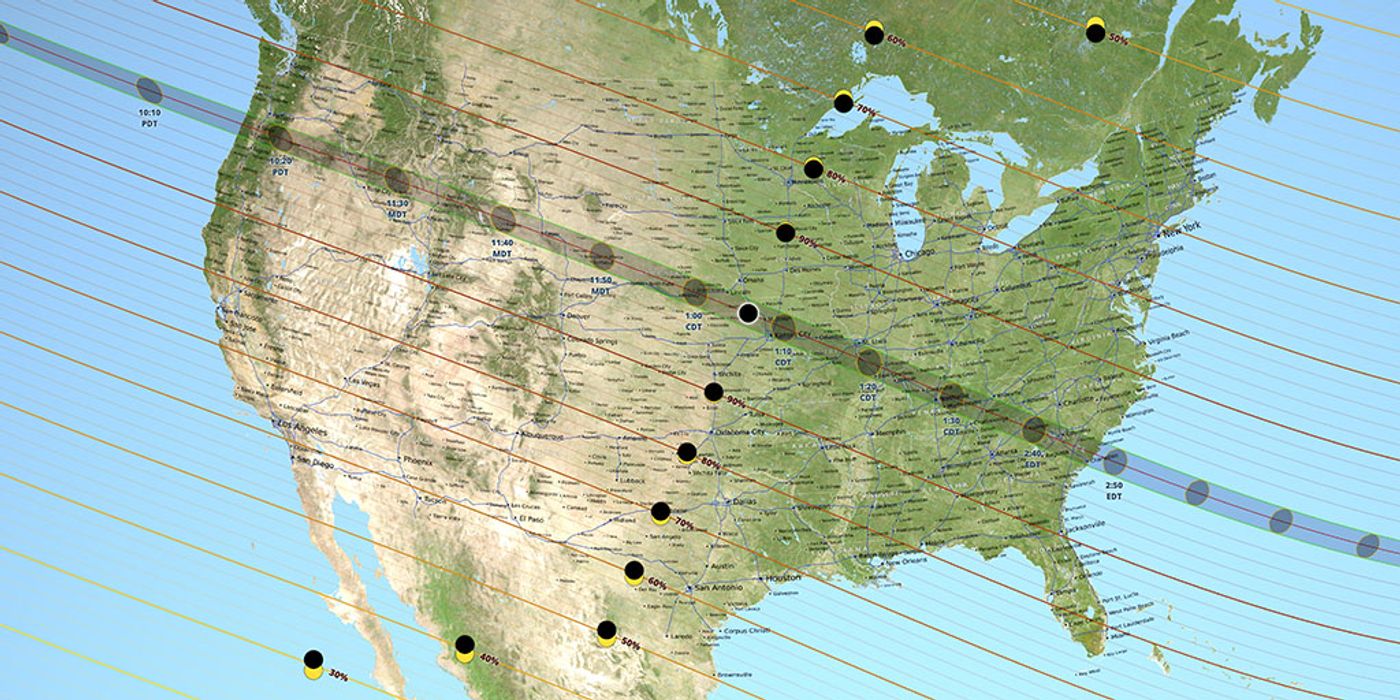Where will you be for the solar eclipse?
For the first time since 1979, a total solar eclipse will cross North America for a matter of minutes, giving the celestial thrill of a lifetime to many people around the country.
On Monday, August 21, 2017, all of North America will be able to see at least a partial solar eclipse; the path of totality in which the moon completely covers the sun runs diagonally in a 70-mile strip from Lincoln Beach, Oregon to Charleston, South Carolina, crossing through 14 states. This will be the first time that such an event has crossed from the West to East Coast since 1918! Parts of South America, Africa, and Europe will also see at least a partial solar eclipse.
The positioning of this event is particularly exciting because that strip is within about a day’s drive from most everyone in the country, making seeing the event more accessible to many people. The longest period when the moon completely blocks the sun from any given location along the path will be about two minutes and 40 seconds near Carbondale, Illinois. That’s bringing a lot of tourists to areas that may not otherwise gain from visitors, which is great for small local businesses. To see specific timings for certain locations, look at the chart from NASA below.
"A total eclipse is such a rare occurrence, for many in the US this will be the first time in their life they can see one," says CNN Senior Meteorologist Brandon Miller. "The path of this eclipse makes it a once-in-a lifetime event in that it transects the country almost down the middle - meaning it is a one-day drive for a vast majority of the nation."
The entire event, in which the moon passes between the sun and Earth and blocks all or part of the sun, lasts for up to three hours. But you can’t just stare up at the sky without protection for the whole time! The only moments when you will be safe to look at the sun is during totality; otherwise, you must use some type of filtering device or indirect viewing where you project an image of the sun onto a screen, NASA suggests.
If you’re watching with children and want to take advantage of the event as a teaching opportunity, check out the kid-friendly resources that The U.S. National Park Service, Bill Nye, and The Planetary Society created. All the resources, including a Junior Ranger program booklet and badge, are free online here.










